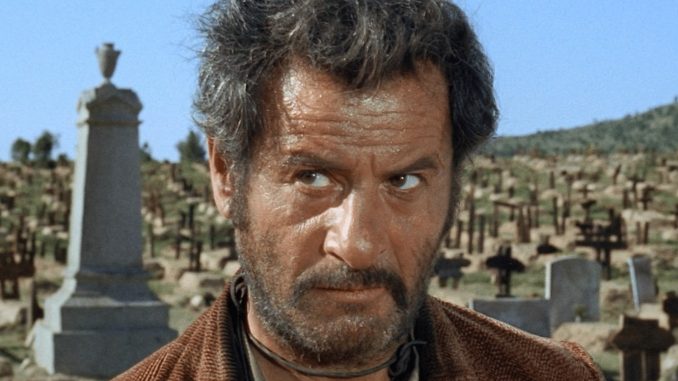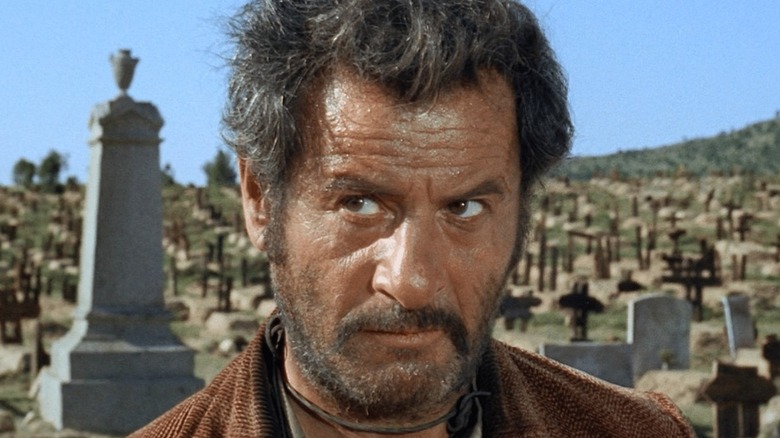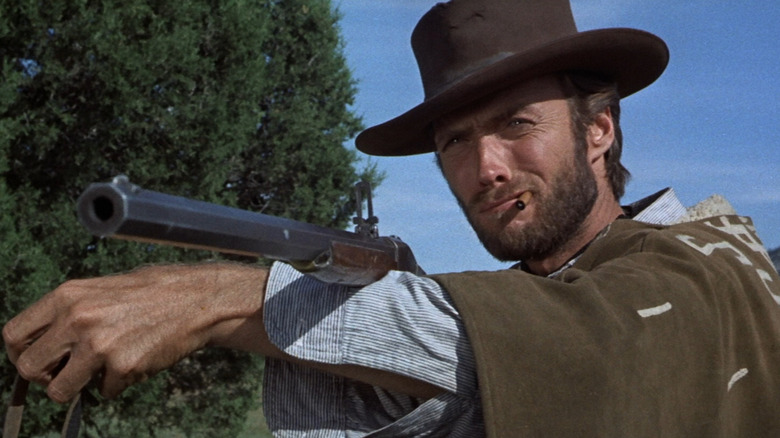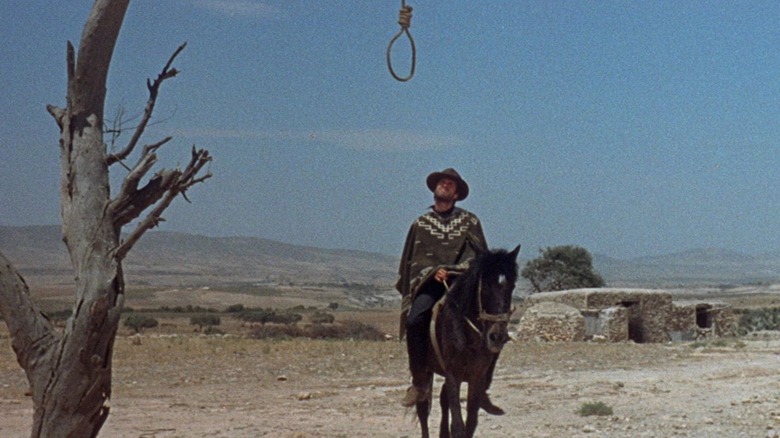
The Gold Rush of 1849 caused thousands of people to flee the Eastern part of the United States and head west to seek easy money, dug up out of the ground. A lot of the lands Americans were infiltrating weren’t being overseen by any kind of widely recognized law, and the boomtowns that hastily formed kind of had to make up their infrastructure as they went along. A whole new world formed: the Wild West.
American writers of fiction were telling tales of the “Great American Frontier” as early as the 1820s (some bibliophiles may be familiar with the works of James Fenimore Cooper), but the Western literary genre began to explode in the late 1850s and 1860s. Pulp novels began to proliferate across the country, and the “penny dreadfuls” invented a lot of the icons and trappings we see in Westerns to this day: gunslingers, bounty hunters, lawmen, etc. Real-life figures often became fictionalized — and made legendary — by these trashy books. Many of the stories from said Westerns also made their way to the stage in traveling gunslinging shows.
Some of the earliest movies drew from pulp Western traditions, and the genre made a happy marriage with the new medium. One of the earliest Westerns, the 90-second short “Annie Oakley,” was released in 1894. For multiple decades, Westerns were the ascendant genre throughout Hollywood, as filmmakers could haul camera equipment out to the deserts of California and shoot on the cheap. They were mythic and inexpensive at the same time.
By the late 1950s, Westerns were finally starting to wane in popularity in the United States, but by then, a new generation of filmmakers grew up being influenced by them. In particular, several Italian directors latched onto the genre, and reinterpreted them in a new, markedly Italian style. The new Italian Westerns from the 1960s were called “Spaghetti Westerns,” named after the well-known Italian pasta.
Who coined the term ‘Spaghetti Western?’
So, no, for those who have always been a little baffled by the term, “Spaghetti Westerns” contain no scenes of characters eating spaghetti. The term was merely taking a stereotype about Italian people — that they have a lot of spaghetti in their diets — and applying it to the films made by Italian directors.
The earliest and most famous Spaghetti Westerns were helmed by Sergio Leone, who directed “A Fistful of Dollars” in 1964. Starring Clint Eastwood in the lead role, the movie was a shameless ripoff of Akira Kurosawa’s samurai film “Yojimbo,” and the Japanese director actually took Leone to court over the matter (Kurosawa won). “A Fistful of Dollars” was a worldwide hit, however, and it birthed a new wave of Westerns for the better part of a decade. Leone himself would turn “Fistful” into an unofficial trilogy with the Eastwood-starring follow-ups “For a Few Dollars More” in 1965 and “The Good, the Bad, and the Ugly” in 1966. Leone also helmed the epic “Once Upon a Time in the West” in 1968, and the amusingly titled “Duck, You Sucker!” in 1971.
According to some special features on the “Fistful of Dollars” Blu-ray, the term “Spaghetti Western” was invented by a Spanish film critic named Alfonso Sánchez, who playfully paired the name of Italian cuisine with a rising film trend. The term stuck, and we’ve been using it ever since. It should be noted that many Italian film directors disliked the term, feeling it reductive and a little offensive.
Many notable Italian Westerns were made via Cinecittà Studios, based out of Rome, but films referred to as Spaghetti Westerns were shot all over Europe, including in Spain and Greece, and were funded by various international studios. Many were shot in the Almería and Tabernas deserts of Spain. So, not everything Americans refer to as a Spaghetti Western is necessarily Italian.
What are the hallmarks of a Spaghetti Western?
What does it mean to be a Spaghetti Western? As dictated by Leone’s aesthetic choices with “A Fistful of Dollars,” Spaghetti Westerns are heightened, more stylized versions of 1940s American Westerns. The colors tend to be more saturated, and the editing faster. The camera angles are either expansively wide, or right up a gunslinger’s nose. The actors are made into caricatures of Western archetypes. As one can see from Clint Eastwood’s performance in Leone’s movies, the heroes tended to be taciturn antiheroes. There aren’t traditional “white hats” in Spaghetti Westerns, as the protagonists aren’t wholly good people. In terms of their dour spirit, Spaghetti Westerns have more in common with Film Noir than with traditional American Westerns.
Audiences also liked Spaghetti Westerns because of their violence. The Hays Code — established in the 1930s — was becoming increasingly moribund, and European directors, who were never beholden to the code in the first place, finally started ignoring it in earnest. All of a sudden, deaths were far more painful, brutal, and dramatic.
The trappings and aesthetics of Spaghetti Westerns proliferated widely throughout the 1960s and 1970s, effectively dismantling the old tropes of pre-1950s Westerns entirely. Other notable films in the genre include Sergio Corbucci’s 1966 film “Django” starring Franco Nero. “Django” spawned many sequels and rip-offs, some of which also starred Nero. Some of the Italian Westerns had fun titles, like 1966’s “Today We Kill… Tomorrow We Die!,” 1965’s “Blood for a Silver Dollar,” 1967’s “Death Rides a Horse,” and the same year’s “God Forgives… I Don’t!”
The Spaghetti Western also began to wane in popularity eventually, and died out in the late ’70s or early ’80s. No trend can last forever.
In case you couldn’t tell, some modern directors love Spaghetti Westerns, and have re-upped their attitudes and aesthetics for a modern audience. Takashi Miike make “Sukiyaki Western Django” in 2007, and Quentin Tarantino made “Django Unchained” in 2012. The spirit of violence, we can see, happily lives on.




Leave a Reply